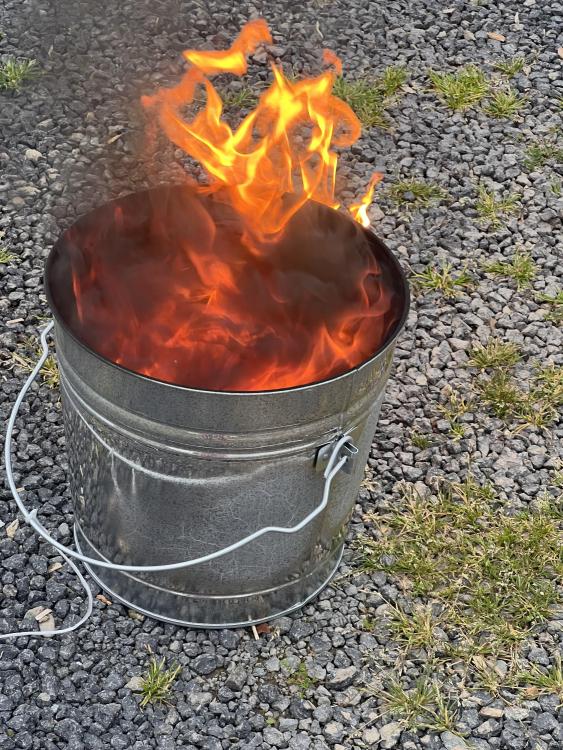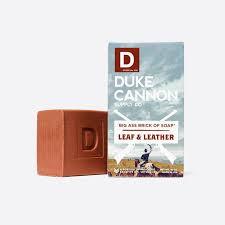-
Posts
4,372 -
Joined
-
Last visited
Content Type
Profiles
Forums
Events
Blogs
Gallery
Everything posted by bruce johnson
-
No sir, I still have too many irons in the fire to learn proper braiding. I am pretty close to retirement from the day job but not sure braiding is in my future when I look at the backlog in my shop here. I am still buying or trading tools for good braid work. Same goes for silverwork. My wife has enough braided bracelets and necklaces to go for a week or more and not wear the same one twice. Silver? She can like go a week there on cuffs and a few weeks on pendants to hang off the braided or Navajo pearl necklaces. She puts up with me and earns every piece she gets.
-
You just missed the Southwest Leather Trade Show in Prescott. Leather Machine Co ("Cobra") was there and wheeled a few machines back into the trailer for home on Sunday. Either they were machines demo'd and used in classes or ones that didn't sell. At the shows there are discounts.
-
A few things can cause that. One is the tension on the leather holding the zipper may be different side to side and that causes the one side to curl a bit when it is open. The other may be the amount of zipper tape that is stitched. Again if the tape is sewn with a wave that can tension or throw excess into the tape when open. Overall, it is probably way more noticeable to you than a customer. Still things to watch for when assembling. I had heck with this same problem when I was doing a lot. Back in the dark ages we used glue and usually two coats on the tape to hold our zippers in place for fitting and sewing. Now my wife takes it up and double sided tape makes it much easier.
-

What do the letter prefixes on Craftool stamps indicate?
bruce johnson replied to AEBL's topic in Floral and Sheridan Carving
The letters came in after 1963. Before that the stamps are called "Pre Letter" by collectors. They used the letters for general stamp categories in the catalogs. Some of them as you say are intuitive - P for pear shaders, etc. Others like bevelers, basket stamp, and borders all start with "B" so they used other letters. To confuse things further, some stamps of a certain number were discontinued over the years and another totally different stamp came in with that number. -
For the Ron's Tools that we stock I sell a fair amount of #5 and #6s to sheath and holster makers for welted work as well as saddle makers. I stock up to #8 - the 7s and 8s mainly go to saddle makers. What I find interesting is the #1 Montana edger. It takes off 1/64" - higher end wallet makers for pocket and falcon hood makers.
-
He should have the #3 size on hand now. I sent in a restock order today that I am picking up next week in Prescott at the show. There are several of the #3 round edgers on that order and he didn't say they were out.
-
Tell him "Hello" and that many people still value his stamping tools. Quality endures. We just stamped off several that we will be taking to the leather show in Prescott in a couple weeks. Thank you also for resurrecting this thread. Reading the names of responders is a list of friends who have a had lot of influence on us over the years, and some continue to!
-
The Tandy and Dream Factory are both based on the design of the Lucris MA 3 clicker made in Australia. I'd look for one of those first if you are set on this design. Solid units with good adjustment for die height. Looks like they still have a US distributor. For about the same money there is Weaver's Mighty Wonder 4 ton. It's a good manual unit too. I had a Lucris for a while several years ago, got a Weaver bench top shop press/clicker plate set up in a deal and sold the Lucris. We both still use that one and it is my wife's choice. I've got a Weaver Mighty Wonder 4 ton I picked up too. I like it but my wife likes the hydraulic better. The benchtop has been refitted with an air over hydraulic jack and runs off a compressor. It is easier for her than pulling a handle and realistically, she is the bigger user. If you are not in a big hurry, the Weaver Mighty Wonder 4 ton will be for sale when I get back from the Southwest Leather Show in AZ (About 3 weeks from now). I'm an hour south of Sacramento.
-
-
After Barge changed their formula several years ago a neighbor and I switched to Renia's Colle De Cologne contact cement. We could get it dropped off by a salesperson on his route and bypassed all the shipping requirements. It is a great contact cement. If you think most solvent based cements have an odor, this stuff makes them seem like kid's paste. No matter the time of year, I used it masked up, outside under an overhang, and hope there was about a 10 mile or better breeze. I couldn't even apply it and toss the pieces into the vent box in the shop without my wife smelling it in the house. When my wife started doing leatherwork the Aquilim was just coming out. She had recently retired from 40 years of occupational exposure to xylene, acetone, and toluene. Going with Aquilim was a no brainer for her.
-
Looking good as usual my friend! Come to Sheridan this year dammit.
-
Rundi has used a bunch of it. It really works well. Key to using is like any contact cement - apply a thin layer to both sides. It maybe takes 10 minutes to tack and stick permanently, apply wetter to reposition. I never had a glue machine and she sure hasn't so can't say on that and don't know. You might be able to contact the rep and see if he knows. He's a good guy for technical support and sets up at the major leather shows in the US too. RENIA GMBH OSTMERHEIMER STRASSE 516 COLOGNE NRW, D 51109 info@renia.com renia.com
-
The large eyes were always weak at the eye just by design.the thinner legs around that wider hole just made them the weak link. Once I got instructed on making a decent tapered end then the normal harness needles were fine and easier to get pulled through the awl stab too. The old joke was that you lost more needles than you broke. That’s one reason I sell John James needles and also carry needle cases. LOL.
-
Looks good on my phone! Thanks Johanna!!!!!
-
I have been updating a recently combined "Resources" section on my website for the last month. It will be a work in progress that I hope you find helpful. https://brucejohnsonleather.com/links-resources - Tool Talk is kind of a blog section - tool selection, tool care, trouble shooting, and announcements/thoughts/mild opinions - Tutorials - These are PDF tutorials I created to address some common questions and tips for using specific tools - Catalogs - I have PDF downloads on this section of older leather tool maker and supplier catalogs - Leather Tool Maker history - this is thumbnail sketch section of some of the leather tool makers of the past - Links for Leather workers - magazines, forums (like Leatherworker.net!), and videos/podcasts that are no cost or by subscription Please check it out and suggestions for more content are always welcome. Thank you! - Bruce
-
Good people to deal with.
-
-
Randy, I don't have a real horse in this race since I sell and have used both. You can get more pressure with control using a push beveler than a bevel blade. You can lay over it and lean into it. With the swivel knife - you get hand pressure and it can get tiring for deeper beveling on long runs. Long straight runs - push beveler. Shorter areas, lighter beveling, or larger curves on stemwork - swivel knife bevel blade.
-
By the construction early to mid 1800s. Steel is usually hard and can be brittle. Without a clear marking the value is pretty much as a user.
-
There have been two books written about tool makers in Newark. There were a bunch as billybop noted. If you could give us a picture of the whole knife that might help narrow it down some. I have never seen an Osborne knife that was size marked, but some earlier makers marked with numbers. A picture would also help establish a value too.
-

NEW - Resources Section on my website
bruce johnson replied to bruce johnson's topic in Leatherwork Conversation
Thank you Tom. This resource section has been a work in progress and still more to come. I have had more suggestions and links sent to me overnight. It is a fun deal for me! -
The two major parts suppliers I am aware of in the US for these have closed down. I would recommend Montana Leather. When we are through there I usually pick up a cutting or feed wheel or two I need for an upcoming refurbishing project. Patrick is the one I chat it up with when we stop - https://www.montanaleather.com/
-
More great work! You need to get back here for a show sometime!
-
Tonight we are going live with a new section on my website. The umbrella is resources and has 5 pages under that. - Blog - short common question answers about tools, insights into whatever grabs me that is leather related, and information/announcements - Tutorials - this page has more in-depth readable and downloads for PDF files for tool use and care - Historical Catalogs and Information - PDF files of old leather tool maker catalogs and historical paper - Tool Maker History and Information - short information on many early leather tool makers - Leatherworker Links - this page has links to current information sources for leather workers - Magazines, Websites and Forums (like here!), and Video links for YouTube channels that I and others have found helpful. Here is the link to the header section - https://brucejohnsonleather.com/links-resources If there are other resources you would suggest, please let me know! Thank you - Bruce
-
A coat or two of the thin to somewhat seal the surface, let it dry. Then thick body CA. I have only used this for bonding smaller pieces of leather to a non-leather surface. I have not bonded two pieces of leather together with CA. There are other adhesives that work more predictably for that.




